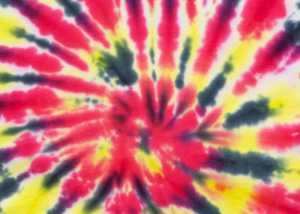How to Safely Wash Bathing Suits & Swimwear
-
 By
Sophia Grant
By
Sophia Grant

Swimming requires a special attire—swimsuits. Often made out of nylon or spandex, they tend to hug the body tightly, which helps to retain heat.
And they’re available in a variety of styles. For instance, women often wear one-pieces, bikinis (two-piece), tankinis, and bandeaus. For men, there are swim briefs, board shorts, trunks, and jammers.
What’s the best way to wash a bathing suit? Can you put them in the washer with other clothes? What detergent should you use? Keep reading for all of the answers!
Table of Contents
ToggleShould I Wash My New Bathing Suit Before Wearing It?
As a general rule, you should always wash a swimsuit before wearing it. You have no idea who tried it on or touched it before you brought it home, after all.
For example, it has probably touched the floor multiple times during its transit to the store. In some cases, there might even be some finishing products leftover on the material that can irritate your skin.
Washing Your Swimsuits
Swimwear can be quite delicate. For this reason, you might want to hand wash them instead of putting them into the washing machine. Don’t worry—it’s not as complicated as it sounds.
If it’s a new swimsuit, you’ll want to get rid of the dirt that it might have picked up before and at the store.
This guide can be used to wash all types of swimwear from any brands including:
- Acacia
- Aexae
- Andie
- Blackbough
- Capittana
- Chromat
- Eberjey
- Fella
- Frankie’s Bikini’s
- L*Space
- Marysia
- Monday
- Oseree
- Peony
- Reina Olga
- Skatie
- Solid & Striped
- Summersalt
- Swimsuits for All
- Vitamin A
- YouSwim
How to Hand Wash Your Swimsuits
Ideally, you want to wash your swimsuit after every each wear. That will keep it in tip-top shape, which will extend its lifespan.
1. Create a Bath

Pour one to two tablespoons of ACTIVE Detergent into a tub or small container and gently agitate the water with your hands to dissolve the powder.
2. Place the Swimsuit Into the Tub
Carefully place the swimsuit in the tub, making sure it’s completely saturated with the soapy solution. Let it sit for up to an hour.
3. Rinse the Bathing Suit With Water

Lightly rub the fabric with your hands before rinsing the garment with clean, running water. That will remove any chlorine, sweat, dirt, salt, or sunscreen that is embedded in the material. Continue to rinse until the water runs clear.
4. Allow It to Dry
Gently squeeze out the excess water from the swimsuit and allow it to air dry. Avoid wringing it like a dishcloth as that will stretch and damage the material. Similarly, you don’t want to leave it outdoors as the direct heat from its the sun’s rays can cause it to warp.
Supply:
- ACTIVE Detergent
- Tub or small container
ACTIVE Detergent
Safely and effectively cleans bathing suits and swimwear in the washer or by hand.

15% Off Your Order on Amazon
×Click below to reveal the 15% off coupon for your entire ACTIVE purchase on Amazon.com
Machine Washing Bathing Suits
Let’s face it, it’s not always possible to hand-wash your swimsuit. Sometimes, you’ll just have to rely on the good ol’ washing machine. Don’t worry—as long as you follow our instructions, it’ll be just as effective as hand washing (if not better).
Never use hot water when washing your swimsuits. The heat will damage the swimsuit’s elastic lining, which will affect its fit.
Supplies
- ACTIVE Detergent
- Mesh laundry bag or a clean pillow case

Step 1:
Place your swimsuit in a mesh laundry bag (or clean pillow case) and add it to the tub. That will prevent it from being damaged in the cycle. Never place a swimming suit directly into the washing machine.

Step 2:
Add one scoop of ACTIVE Detergent and run a gentle wash cycle with cold water.

Step 3:
Once the wash cycle is complete, hang the swimsuit and allow it to air dry. You can also lay the swimsuit flat to dry.
Never place your bathing suit in the dryer; that will ruin the elastic and cause the garment to lose its shape.
How to Remove Stains on Bathing Suits
No matter how careful we are with our swimsuits, stains can happen. For one thing, both sunscreen and chlorine are capable of discoloring fabric. Of course, there’s also food and beverages, both of which tend to find its way onto our suits one way or another.
Be as gentle as possible when removing stains. Never scrub or rub as that can damage the fabric.
Supplies
- ACTIVE Detergent
- Small bowl
- Clean washcloth
Step 1:
Dissolve a bit of ACTIVE Detergent powder in a small bowl. Using a damp washcloth, apply the mixture onto the stain.

Step 2:
Let the detergent mixture sit on the stain for 15 to 20 minutes before rinsing it under running water.

Step 3:
Lay the bathing suit flat on a clean surface and allow it to air dry.

Best Laundry Detergent for Swimwear
Now you’re probably wondering—”What kind of detergent should I use for my swimsuit?” There are many options but only some of them are safe for swimwear – ACTIVE being one prime example.

What makes ACTIVE Detergent different? It’s specially formulated for active wear and that includes swimwear. With just a little bit, you’ll be able to remove most if not all of the “ick” that might be on the fabric, thanks to its plant-based enzymes.
How to Wash Swimming Suit – FAQs
How can I keep my bathing suit in good condition?
Wash your bathing suits after each wear and avoid sitting on rough surfaces while you’re wearing it as that can damage the delicate material.
Are hot tubs bad for bathing suits?
The heat and jets in a hot tub can damage a bathing suit (including swim trunks) over time. For that reason, it’s best to limit your hot tub time or have a designated bathing suit for the hot tub.
How do I get rid of sunscreen stains that are on my bathing suit?
Soak your bathing suit in cold, soapy water as soon as you take it off. Using a mild detergent, like the one by ACTIVE, and gently massage the fabric with your fingers – that should help loosen the chemicals. Lay the suit flat to dry afterward.
What’s the best way to properly wash a bathing suit?
Hand washing is the best choice when it comes to washing your bathing suit. All you need is some ACTIVE detergent and water. Let it soak in the mixture for sveral minutes to get rid of any pool chemicals, sweat, and body oils.
Air drying is best afterward.
Can I put my swimsuit into the washing machine without a mesh bag?
No, you should never put your bathing suit directly into the washing machine without using a laundry bag. The agitation during the wash cycle will damage the wet swimsuit.
If you don’t have a mesh bag, place it in a clean pillowcase and run a gentle cycle.
Should I wash my bathing suit with hot or cold water?
You should always wash your bathing suit with cold water. Heat can cause the nylon materials to deteriorate over time.
SAVE
15% off
Your Next ACTIVE
Purchase on Amazon
15% Off Your Order on Amazon
×Click below to reveal the 15% off coupon for your entire ACTIVE purchase on Amazon.com
Limited Time Offer






Comment (1)
Such an informative blog,
Always rinse your swimwear immediately after wear. We usually just wash it the same time we take a shower – because it’s still considered a rinse and we are lazy like that!